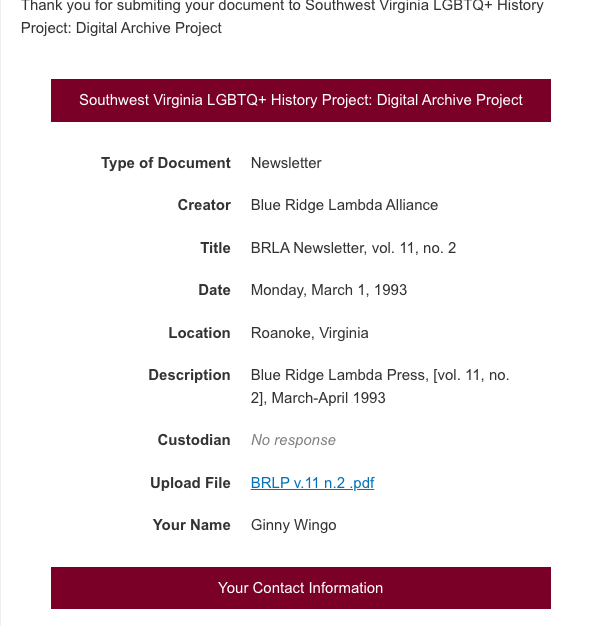Skill #1
Hi! My name is Ginny Wingo and I’m a senior. I study Philosophy and History here at Roanoke. I grew up in Southwest Virginia in a town called Rural Retreat. Outside of my coursework, I mostly enjoy reading and spending time with my cat, Radish.
Skill #2

Skill #3
OCR and Women’s History

This article, published originally in the Boston Herald, describes an upcoming lecture by Victoria Woodhull called The Scarecrows of Sexual Slavery. Her lecture consisted of her pointing out various ‘social scarecrows’ surrounding her movement, refuting fears of women’s sovereignty and how it would affect family dynamics. The author states that she was not concerned with social or legal repercussions of her views and overall does not attempt to portray her in a negative light, though that could be further attributed to the piece having originally been published in a Massachusetts based newspaper.
This article was found using the Chronicling America project from the Library of Congress and their use of optical character recognition (OCR) for finding key words and phrases in digitized newspapers dating back to 1777.
Machine Reading and U.S. Presidential Inaugural Addresses, Reagan (1985) vs Nixon (1973)


Word clouds generated from Ronald Reagan’s inaugural address, January 21, 1985 (left) and Richard Nixon’s inaugural address, January 20, 1973 (right). SOURCE: American Presidency Project.
For this assignment, I was curious to see how similarities and differences in Nixon’s and Reagan’s policies were reflected in their inaugural addresses for their second terms. Though it is to be expected of any president addressing their nation as a whole, in both speeches there is a frequent use of unifying words like “us,” peace,” and “American.” In Nixon’s speech you see words like “war,” “responsibility,” and “end,” as he discusses his plan to usher in a new era of peace post-Vietnam. In Reagan’s speech there is the frequent use of words like “nuclear,” “back,” and “best,” signaling his use of his time in office of trying to win the Cold War and matching Soviet military power.
Tools, such as distant reading, make analysis of data generated into forms like word clouds much easier and user-friendly. Instead of reading each speech and counting the repeated use of words manually, something as simple as an extension on Google Docs can help researchers look for patterns in small data more easily and quickly.
Machine-Reading and Latin American History

For this assignment, I wanted to see how interest fluctuated in Latin American history and more specifically, Latin American independence. In my experience with public education, coverage of the American colonial period is extensive, but coverage of the colonial period in South America is essentially non-existent. Fransisco de Miranda was a Venezuelan revolutionary who was ultimately overshadowed by Simón Bolívar, the first president and namesake of Bolivia, and he was succeeded by Antonio José de Sucre. Interest in writing about these key figures did not begin to register until around 100 years after the Latin American independence from colonial rule, and ultimately most attention has been focused on Simón Bolívar.
Google NGram is an example of how machine-reading can be used to more efficiently assist researchers in finding patterns in sets of big data, rather than having to pore over the countless books in Google’s database themselves.
